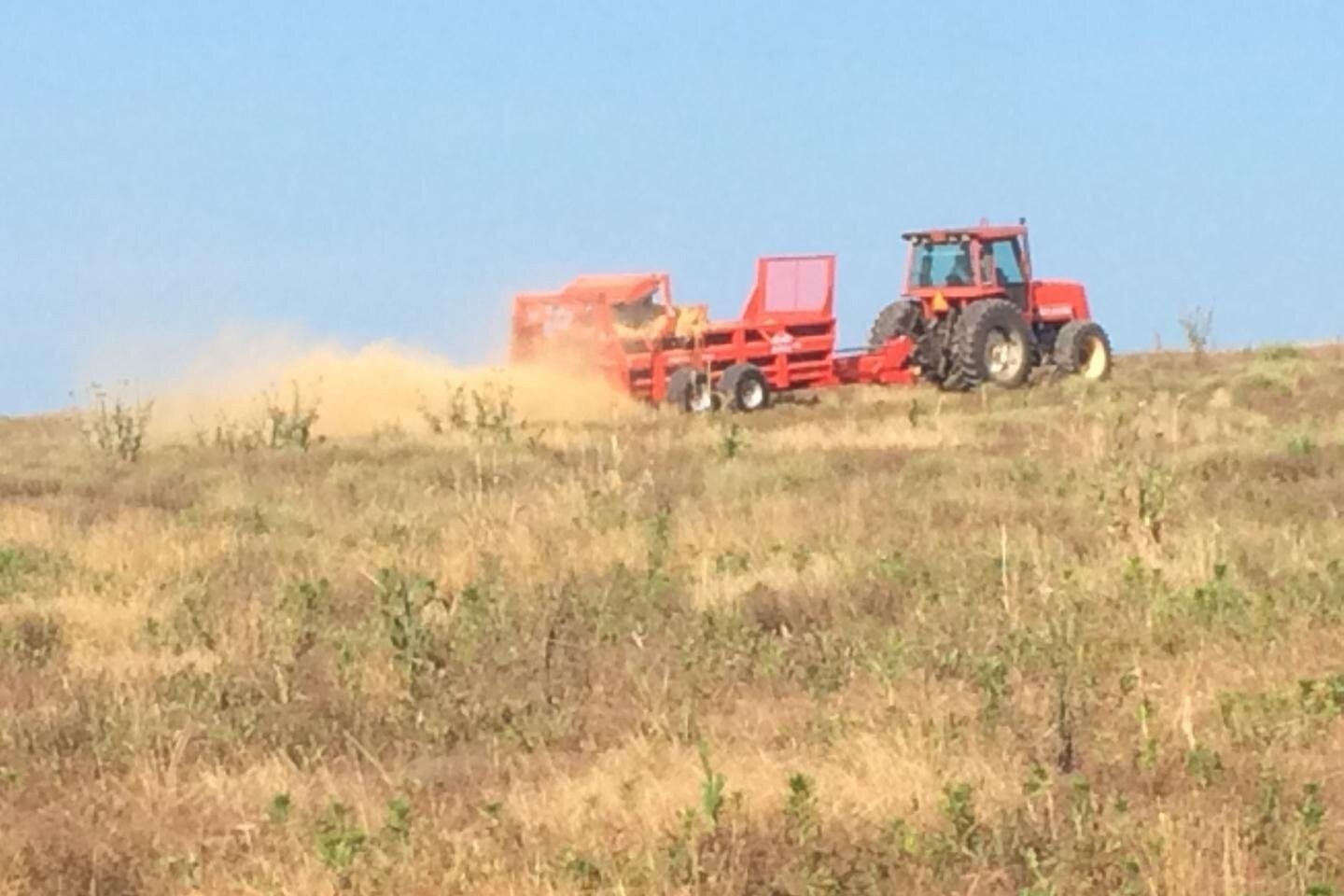Dec 6 2019
Biotechnology byproducts can be recycled to improve soil health while maintaining crop yields and reducing carbon emissions. A study recently published in Agrosystems, Geosciences & Environment analyzes the potential advantages of a novel type of crop fertilizer.
 Sprayers, like the one shown above, can distribute many materials across crops. In this research study, the team applied inactivated spent microbial mass (SMB) and measured maize yields over two growing seasons and changes in soil carbon. Image Credit: Photo by D. O’Dell, courtesy UTIA.
Sprayers, like the one shown above, can distribute many materials across crops. In this research study, the team applied inactivated spent microbial mass (SMB) and measured maize yields over two growing seasons and changes in soil carbon. Image Credit: Photo by D. O’Dell, courtesy UTIA.
Scientists from the University of Tennessee Institute of Agriculture, together with colleagues from MetCorps, USDA, Oklahoma State University, and DuPont, examined two fields of maize (Zea mays L. var. indentata): The first plot was treated with heat-inactivated spent microbial mass(SMB), and the second plot treated with a common farmer fertilizer practice.
SMB is a biotechnology waste by-product that offers nutrients contained in traditional fertilizers. In a year’s time, the scientists quantified the net ecosystem exchange of carbon-dioxide (net CO2 emissions) between the atmosphere of the two plots and the crop surface. Moreover, researchers measured maize yields in two growing seasons, as well as changes in soil carbon over one year and seven months.
Reusing industrial biotechnology by-products has become an important component of circular bio-economies.
Deb O’Dell, Lead Investigator, University of Tennessee Institute of Agriculture
At the time of this study, O’Dell was a graduate research assistant in the Department of Biosystems Engineering and Soil Science, working under the guidance of Neal Eash, co-author and soil science professor.
When nutrient-rich wastes are returned to agricultural land, soil fertility improves and crop productivity increases. Also, re-using waste streams can reduce greenhouse gas emissions and improve soil fertility, which could generate greater environmental benefits as well.
Neal Eash, Professor of Soil Science, University of Tennessee Institute of Agriculture
According to James Zahn from DuPont Tate & Lyle Bio Products, LLC, “Applying the rich source of nutrients in DuPont’s biotechnology waste to agriculture has potential not only to replace mineral fertilizers but to enhance the soil and improve agricultural production.”
The study outcomes show that the addition of SMB offered crop yields similar to that of regular farmer fertilization practices. But the SMB had to be used at higher rates. Additionally, the researchers discovered that the yearly net ecosystem exchange of carbon dioxide was quite higher for SMB usage than for the farmer practice plot, even though some extra emissions occur to be recycled again into the ecosystem.
“The greater application of SMB shows the potential to enrich ecosystem productivity and environmental sustainability through the conversion of waste nutrients into greater yields, greater plant biomass and increased soil carbon,” the paper’s authors suggest.
On the whole, the study discovered that using carbon-rich waste nutrients increases soil organic matter. This enhances the chemical and physical properties of the soil, by developing a reservoir of plant nutrients. Further, these nutrients offer agricultural and environmental benefits that extend further than the instant application and harvest yield.
Apart from O’Dell, Eash, and Zahn, the team included Bruce Hicks and Joanne Logan, faculty in the UT Department of Biosystems Engineering and Soil Science; B.B. Hicks, MetCorps; T.J. Sauer, USDA National Laboratory for Agriculture and the Environment; D.M. Lambert, Oklahoma State University; and J.J. Goddard, UT Extension agent in Loudon County.
O’Dell and Oetting took part in the research while working on their graduate degrees in soil science from UT.
The research was financially supported by DuPont Tate & Lyle Bio Products, LLC, with support from the James family in Loudon, Tennessee. They helped the researchers to perform the experiment on their farm. Additionally, support and instrumentation were offered by the National Oceanographic and Atmospheric Administration, and statistical support was provided by Xiaojuan Zhu of the UT Office of Technology Information Research Computing Support.